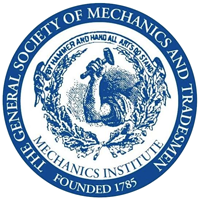With Donald Friedman, P.E, Principal, Old Structures Engineering.
Presented in Partnership with The New York Landmarks Conservancy
An Online Lecture on Tuesday, March 30th at 6 p.m.
Landmarks are survivors and give us only a partial view of the past. Designated buildings are luckier than average, often better-looking than average, and mostly represent the upper economic classes. What did New York actually look like in 1900? You need to look beyond the remnants to get a sense of what the experience of the built environment used to be. In his lecture, Donald Friedman, Principal, Old Structures Engineering will examine The Appearance Of The Past. To register, please click here.
In 1900 more than half of the population of Manhattan lived in tenements, there were no playgrounds, large areas of the city had no parks of any kind, and there was one bridge (and no tunnels) crossing the East River. Buildings tended to be clustered by type, so there were skyscraper districts downtown and near Madison Square, while large portions of the Upper West Side consisted almost entirely of rowhouses and large portions of the Upper East Side consisted almost entirely of tenements and small factories. Streets were a crowded combination of horse-drawn vehicles, streetcars, and pedestrians; the use of coal for heat created black smog. In short, the city 120 years ago was smaller-scale than it is now, but in some ways a more intense urban experience, as Mr. Friedman will describe in his talk.
Donald Friedman is President of Old Structures Engineering, PC, a structural engineering consulting firm for historic and old buildings. He has over 25 years’ experience in the investigation, analysis, and restoration of landmark buildings. Representative projects include: structural design of repairs to the crypts at the New York Marble Cemetery; investigation and alteration feasibility study of Castle Clinton; investigation of damage and repairs to Belvedere Castle; facade analysis and design of new terra cotta supports for the 1906 Langham Apartments; and frame analysis and alterations to the 1896 Gerken building.
Mr. Friedman holds a B.S. in Civil Engineering from Rensselaer Polytechnic Institute and an M.A. in Historical Studies from the New School. In addition to Mr. Friedman’s project work, he has taught extensively and is the author of numerous books including, the recently published, The Structure of Skyscrapers in America. For more information, please visit www.oldstructures.nyc.
1.0 AIA LU credit is available for qualifying participants.
Suggested donation:
$15 General Admission; $10 General Society Members, New York Landmarks Conservancy Members and Senior Citizens; $5 Students.
Advance registration is required to receive the link to the Zoom Webinar Platform.
www.generalsociety.org
